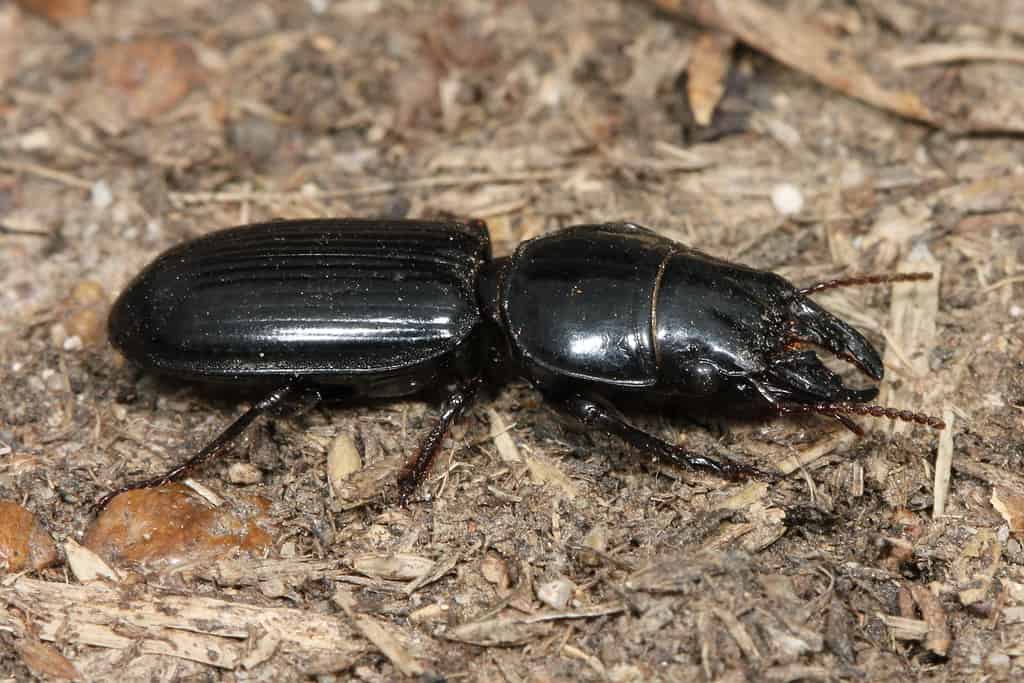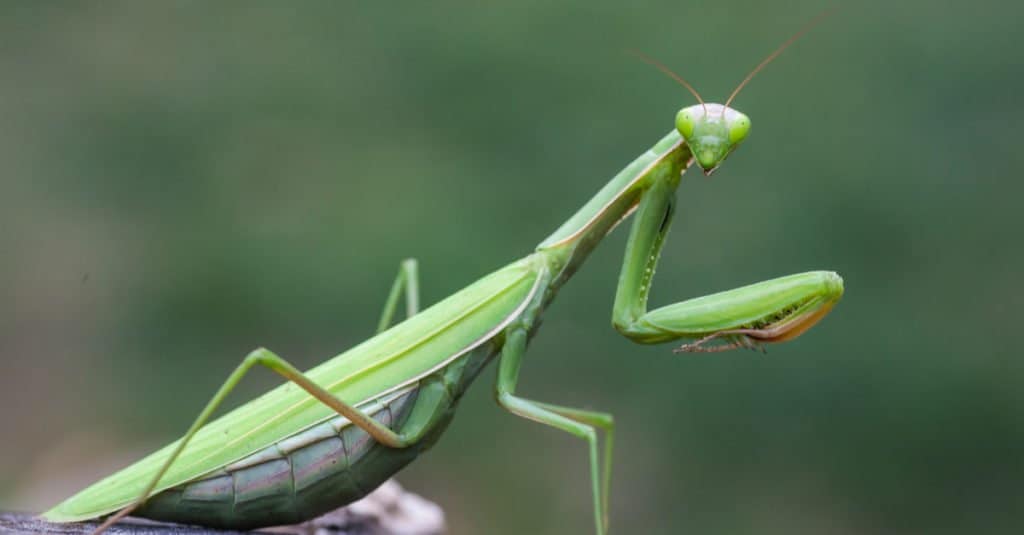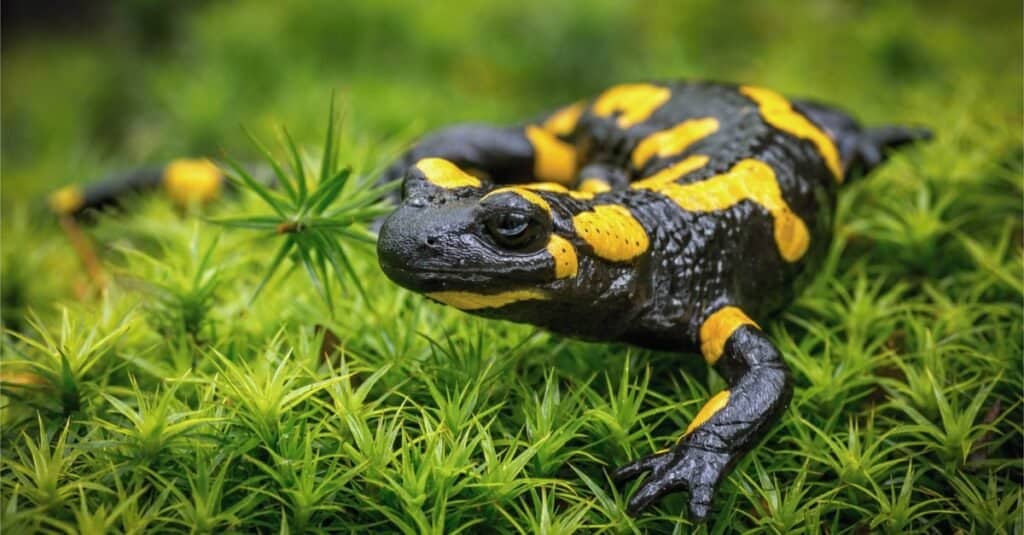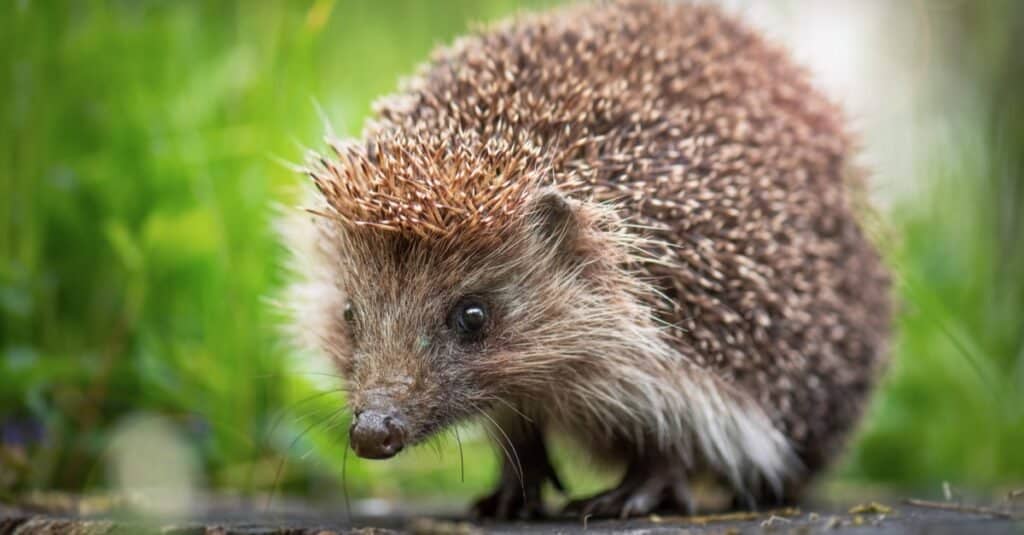Among many gardens of the great outdoors lies an unruly creature…a slimy slug. These shell-less molluscs always seem to find themselves in the spotlight but for all the wrong reasons. Gardeners and farmers loathe its presence as they can wreak absolute havoc on crops and flowers within the blink of an eye. But did you know that there is a silver lining to the slug population? There is a hidden world of predators, which include frogs, beetles, prey mantis, salamanders, hedgehogs, and birds that patrol the grounds. Therefore, they keep the slug crisis under control. Below, you will discover an interesting read about slug predators.
What Eats Slugs
Frogs

Amphibians can quickly use their tongues to catch a slow-moving slug and have a nourishing meal.
©dwi putra stock/Shutterstock.com
Frogs feature moist skin, protruding eyes, and feet with webbing. These traits allow them to thrive in both water and land environments. Furthermore, frogs are known for their preference for slugs as a food source. Since slugs move slowly, frogs can effortlessly capture them with their tongues, obtaining a nourishing meal.
Beetles

Slug predators such as ground insects are beneficial to garden environments as they control slug populations.
©3,000 × 2,000 pixels, file size: 2.09 MB, MIME type: image/jpeg – Original / License
Beetles are easily identified by their forewings, which serve as a protective covering for their fragile hindwings. These insects actively search for slugs to consume as they offer a protein source, keeping the beetles satisfied for extended periods of time. furthermore, beetles possess jaws that enable them to penetrate the slimy layer of slugs and feed on their flesh.
Praying Mantis

When prey is near, these insects’ advanced eye vision and stealth are on high alert.
©Ryzhkov Oleksandr/Shutterstock.com
Praying mantises come in different shades of green and brown, which allows them to blend seemingly into their environment. When prey is near, they shift into high alert. They patiently wait for the ideal moment to capture and immobilize their prey once it comes within reach. Although praying mantises have a wide taste for crickets, moths, and flies, they will only feed on slugs if no food is available to them.
Salamanders

Slugs are a great choice for salamanders in need of hydration.
©Jiri Plekanec/Shutterstock.com
Salamanders are part of a diverse group with over 600 recognized species. Being close relatives to frogs and toads, they also feature smooth, wet skin. As slugs’ bodies’ consist of mostly water, they are important for a salamander’s diet. In particular, salamanders need to maintain their own moisture, so if water is scarce, slugs make the perfect source for hydration.
Hedgehogs

Slugs are an attractive dinner for hedgehogs because they can eat slugs whole without cracking or opening a shell.
©DenisNata/Shutterstock.com
Hedgehogs display a spiky coat of sharp, protective quills. At any time they feel frightened or threatened, they roll up into a tight ball to shield themselves against dangerous predators. In addition, due to slugs being soft-bodied creatures, hedgehogs prefer eating them. Consequently, slugs are a palatable choice for hedgehogs because they don’t have to struggle to open the shells of other prey.
Birds

Blackbirds, jays, magpies, seagulls, starlings, robins, and gulls, often eat slugs.
©iStock.com/JMrocek
Around the globe are over 10,000 species of birds. Many of these birds live in diverse habitats, including grasslands, savannas, inland wetlands, and even polar regions. Birds like blackbirds, jays, magpies, seagulls, starlings, robins, and gulls, are some of the biggest slug predators. These warm-blooded vertebrates are all opportunists when it comes to food. Moreover, while birds fly high, they can easily spot and snatch up some slugs, helping the environment from this sticky pest.
The photo featured at the top of this post is © Dieter Hawlan/iStock via Getty Images
Thank you for reading! Have some feedback for us? Contact the AZ Animals editorial team.







